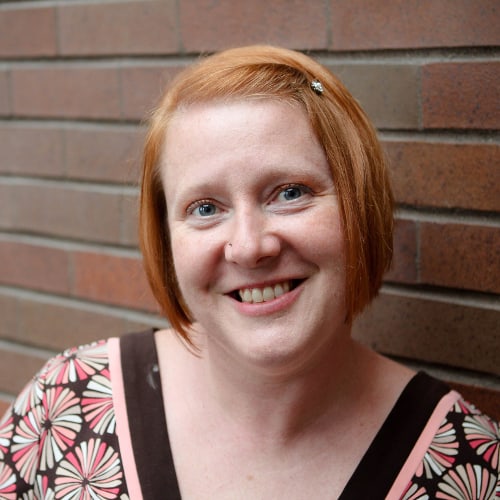Can Vision Planning Ward Off the Politics of Education?

Ask any teacher, and they will tell you that at some point in their career they’ve likely sat on a Mission Statement team, a Data Collection committee or a Creating Culture task force.
Experiences vary as widely as the personalities assembled, and the end results are often a direct result of these interactions.
Unfortunately, the work sometimes loses its impact the minute the committee leaves the room because the invested parties return to their regular positions and the everyday avalanche of expectations. While most of this work is necessary, how often can we agree that it actually has continuing importance versus a short-term solution to the ongoing ebb and flow of educational demands?
Is there a way to ground committee work in order to give it lasting impact?
I have been involved with the “Vision Committee” in my district for almost a year now, and this committee has served as an excellent template for creating meaning instead of just more work. The “work” is actually happening with rotating groups, starting with a wide collection of stakeholders and continually narrowing down until it will eventually reach the classroom level. This seems appropriate because vision, after all, is forward-thinking, optimistic and, above all, a leap of faith that what is established in the here and now will have an impact into the future. Thus including a rotating group makes sense.
The first half of the work was completed by a large group comprised of stakeholders in the district (i.e., parents, teachers, admin, board, clergy, parents and former students). Superintendent Dr. Apthorpe worked from the premise that “there are a lot of forces that want to take control of schools, but the key is to have an intentional, formal identity that is agreed upon by stakeholders.”
This intent is important and Dr. Apthorpe emphasized that the crush of the political can successfully be combated by a community’s vision of itself embedded in well-developed and established standards. If a vision is in place, the winds of change might obscure things for a time, but a community will always come back to its core values.
We ended this first phase with just such a vision statement:
“The Frontier School Community values and expects a Frontier education to provide life skills and academic skills that allow our students to be successful in any endeavor. A Frontier education will lead to a sense of value of charity, service and community.”
The second phase assembled a committee of teachers and administrators who were charged with creating graduation standards that incorporate the vision statement. These standards were to be unique to the needs of this district and community. Our work will trickle down to individual departments, subject areas and teachers.
This method of synthesizing the needs of such a large constituency is unique and worth thinking about as an alternate model to the “drive by” experiences that so often happen in our super busy world. Clearly, there is no one way to approach this type of work, but here are three ways that this particular configuration has helped create meaning for all involved.
Context
To begin this type of work, one has to contextualize the current state of the school district, situating it within the political, economic and educational climate overall. This is “legacy work” with long-lasting impact, and this is a journey that high performing schools are willing to go through.
After all, education leaders, teachers and the community must wade through graduation standards, power standards, anchor standards, exit standards, commencement standards–all the while attempting to decipher what is best for kids. Too many times, we are too focused on the microcosm of a particular building, department or grade level instead of the broader educational climate which will ultimately impact schools. I’ve been guilty of personalizing myself–because how can you not–yet it is crucial to pull the lens back to the greater context.
Conversation
Sometimes during committee meetings, it seems as if there is never enough time for everyone to be heard. The opposite seemed to be true of this arrangement–at first. In fact, initially, there was some sitting around wondering what we were supposed to be talking about. However, as the work deepened, so did the conversations.
There was more than enough time, which is always at a premium, and it ended up giving everyone a deeper level of understanding. We were told to “socialize” the work, meaning that we needed to talk it through and look at it through the variety of lenses represented. It was both frustrating and enlightening to realize that a group of educators could have widely (and wildly) varying interpretations of even a single word. Though the conversation proved to be grueling, the actual product was representative of the myriad opinions.
Commitment
Here’s the rub: this method of meaningful work takes both time and resources. The first committee was comprised of a few dozen busy adults, and the second configuration of the group was equally as large. By the time this “Vision” project moves forward, it will become the work of an entire district of teachers. It is refreshing that there has been a commitment to stick with this, particularly in such turbulent times when education reform is the order of the day.
What are the larger implications of this type of committee work?
- The larger the participation in the all-important planning stage, the more invested educators there will be when the actual domain specific work begins.
- It represents stability, which in most educational environments is sorely lacking.
- The intensity of this “work” is a reminder that the business of education is serious, important and enduring.
What struck me about this experience is that it happens so infrequently. When was the last time you were a part of a committee that formalized and internalized the vision that you have for your students? Consider setting a vision for what it means to graduate from your district, and you’ll find that the range of experiences within is so broad that it will require a new way of looking at the familiar; when a vision has been established the politics can be pushed aside and a new endeavor appears–planning future communities.
For more, see:
- Managing Students for Success: An Intentional Intervention System
- Face (to Face) Time: The Power of Vibes and Group Dynamics in a Digital World
- What’s Your School District’s Tagline for the New School Year?
Stay in-the-know with all things EdTech and innovations in learning by signing up to receive the weekly Smart Update.







0 Comments
Leave a Comment
Your email address will not be published. All fields are required.